Whilst the car was on display at one of the few public showings, Tarmac managed to get a drive in the prototype. Whilst the test car is based on the Tiida model, the running gear is very similar to that which will be seen in the production Leaf in a few years time.
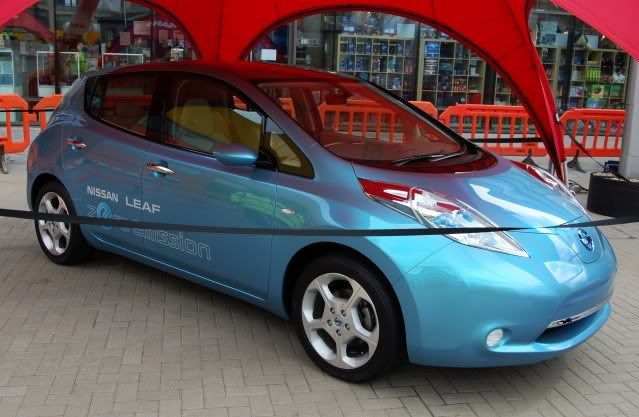 First impressions of the concept car are good. It looks, too all intents and purposes, like a regular car. This of course is for good reason, as regular cars are what people actually want. With the best intentions in the world, electric quadricycles like Reva's G-Wiz will never become commonplace as they can't offer the space and pace that people accept from the cars they're used to.
First impressions of the concept car are good. It looks, too all intents and purposes, like a regular car. This of course is for good reason, as regular cars are what people actually want. With the best intentions in the world, electric quadricycles like Reva's G-Wiz will never become commonplace as they can't offer the space and pace that people accept from the cars they're used to.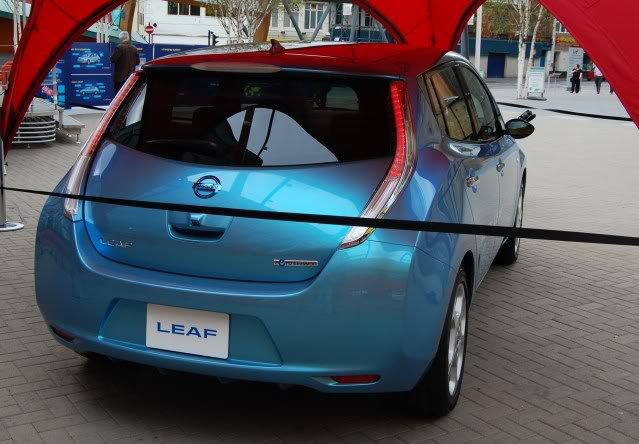 To this end then, the Leaf is off to a good start. It's a five-door hatchback with space for five, a good boot, and an inoffensive shape that manages to retain a bit of character. The front is modern and equipped with large headlights similar to those on the Ford Fiesta, and the rear has a hint of the last-generation Renault Megane about it. Even the interior is much like a normal car, with normal controls and two hooded instrument clusters. Only the large digital display in the centre console really hints at the Leaf's high-tech drivetrain.
To this end then, the Leaf is off to a good start. It's a five-door hatchback with space for five, a good boot, and an inoffensive shape that manages to retain a bit of character. The front is modern and equipped with large headlights similar to those on the Ford Fiesta, and the rear has a hint of the last-generation Renault Megane about it. Even the interior is much like a normal car, with normal controls and two hooded instrument clusters. Only the large digital display in the centre console really hints at the Leaf's high-tech drivetrain.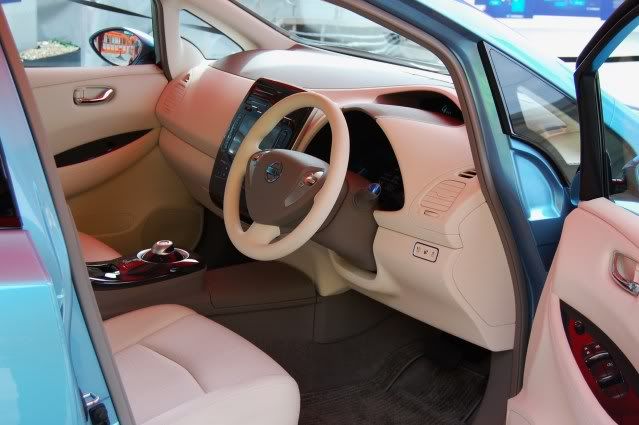 From this point, the package starts looking quite different from regular cars. The shape has been specially designed for aerodynamic efficiency - those lights split airflow over the mirrors to reduce drag, and thanks to LED technology consume less power, too. The large Nissan badge on the nose sits on a hinged flap that opens up to reveal two charging points, one for quick chargers that can provied up to 80% charge in half an hour, and the other for a more leisurely charge. Range is around 100 miles which doesn't sound like a lot, but most research seems to suggest that the majority of journeys in the UK are over fewer than eight miles, so even if you didn't put the car on charge every night most people would still have enough for ten journeys.
From this point, the package starts looking quite different from regular cars. The shape has been specially designed for aerodynamic efficiency - those lights split airflow over the mirrors to reduce drag, and thanks to LED technology consume less power, too. The large Nissan badge on the nose sits on a hinged flap that opens up to reveal two charging points, one for quick chargers that can provied up to 80% charge in half an hour, and the other for a more leisurely charge. Range is around 100 miles which doesn't sound like a lot, but most research seems to suggest that the majority of journeys in the UK are over fewer than eight miles, so even if you didn't put the car on charge every night most people would still have enough for ten journeys.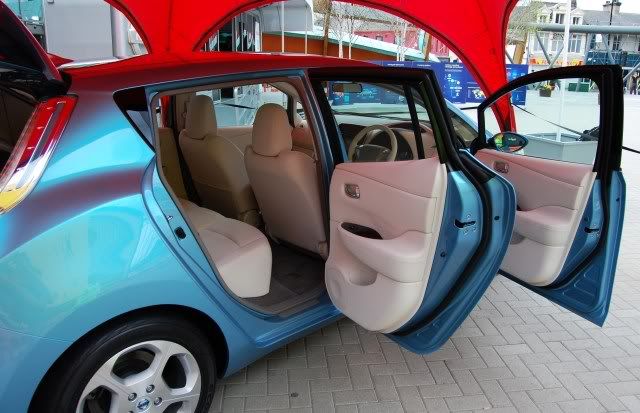 The batteries themselves are stored under the cabin floor. The electric motor they power delivers 80kw of power, or around 107bhp. They also give a huge 280nm (206lb ft) of torque from zero rpm.
The batteries themselves are stored under the cabin floor. The electric motor they power delivers 80kw of power, or around 107bhp. They also give a huge 280nm (206lb ft) of torque from zero rpm. Sitting behind the wheel of the Tiida-based test car and moving off, this torque is immediately noticeable. Movement is instant and remarkably smooth in a way that even the best automatic transmission in a regular car can't manage. Throttle response can't be faulted. The silence is rather eerie at first but it makes the car seem supremely relaxing to drive - I suspect that the utter silence and smooth power delivery would make even the worst city driving seem far less stressful. As would the controls, which are simplicity in themselves - a tiny joystic selects drive (left and back), reverse (left and forwards) and a little button on the top selects park.
Sitting behind the wheel of the Tiida-based test car and moving off, this torque is immediately noticeable. Movement is instant and remarkably smooth in a way that even the best automatic transmission in a regular car can't manage. Throttle response can't be faulted. The silence is rather eerie at first but it makes the car seem supremely relaxing to drive - I suspect that the utter silence and smooth power delivery would make even the worst city driving seem far less stressful. As would the controls, which are simplicity in themselves - a tiny joystic selects drive (left and back), reverse (left and forwards) and a little button on the top selects park.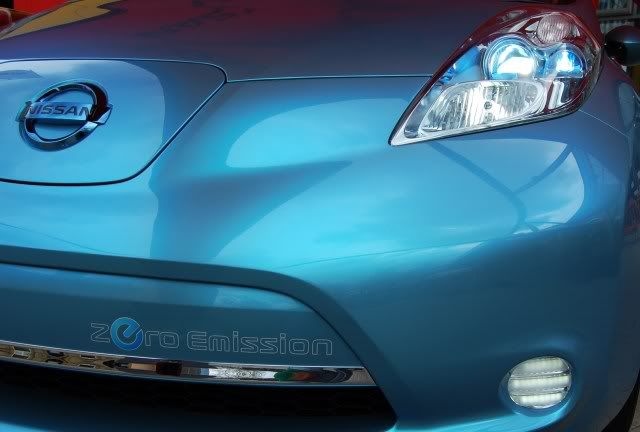 The test car didn't have regenerative braking but the production Leaf will do. As such, the brakes felt quite sharp, having probably been beefed up in the test car to make up for the lack of engine braking. Normally, simply backing off the power would see significant braking from the motor - to the point where using the car's brakes would be an uncommon occurence in town.
The test car didn't have regenerative braking but the production Leaf will do. As such, the brakes felt quite sharp, having probably been beefed up in the test car to make up for the lack of engine braking. Normally, simply backing off the power would see significant braking from the motor - to the point where using the car's brakes would be an uncommon occurence in town.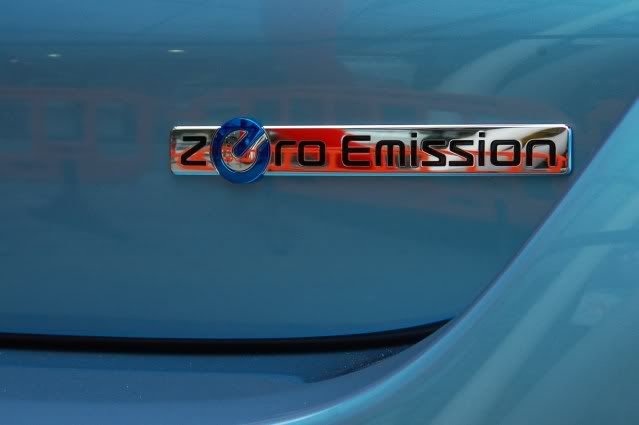 Propulsion aside, it again feels just like a regular petrol or diesel powered car. It's difficult to make too accurate a judgement on the finished product given that I only got a three laps of a very short circuit in which to test the car, but both ride and steering seemed fine - presumably no different from the petrol-powered Tiida. Again, this is important in attracting the buying public to the car - all the benefits of EV technology but with none of the drawbacks of cars like the G-Wiz.
Propulsion aside, it again feels just like a regular petrol or diesel powered car. It's difficult to make too accurate a judgement on the finished product given that I only got a three laps of a very short circuit in which to test the car, but both ride and steering seemed fine - presumably no different from the petrol-powered Tiida. Again, this is important in attracting the buying public to the car - all the benefits of EV technology but with none of the drawbacks of cars like the G-Wiz.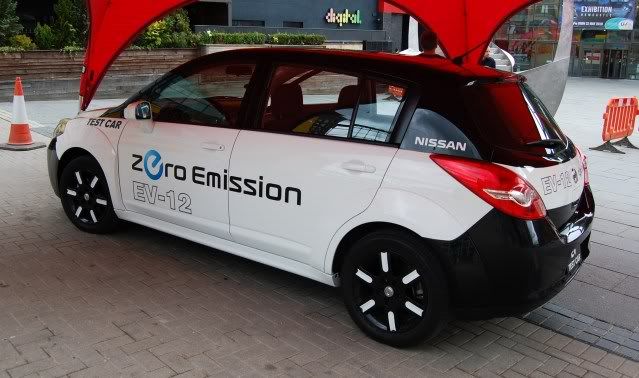 Overall, I came away very impressed with the Leaf and itching to have another go. Electric cars are rapidly getting to the point where they can be considered serious alternatives to petrol and diesel cars for many people.
Overall, I came away very impressed with the Leaf and itching to have another go. Electric cars are rapidly getting to the point where they can be considered serious alternatives to petrol and diesel cars for many people.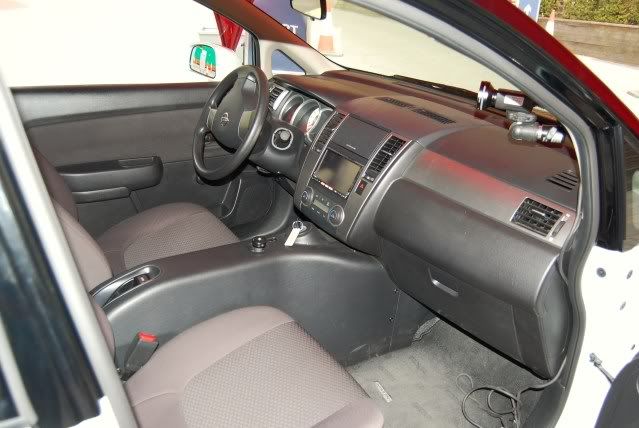 Of course, this is very much price-dependant. The number being thrown about at the moment is around £27,000 which is a lot for a small family car, but as with any technology the early adopters will bear the brunt of higher prices and this will bring down the unit cost for the manufacturers.
Of course, this is very much price-dependant. The number being thrown about at the moment is around £27,000 which is a lot for a small family car, but as with any technology the early adopters will bear the brunt of higher prices and this will bring down the unit cost for the manufacturers.The Nissan Leaf is a good car even at this early stage, and a serious indication by Nissan that electric cars can walk the walk as well as talking the talk.
You can follow updates on the Nissan Leaf on their twitter page: https://twitter.com/UKNissanLEAF
All photos: ©Tarmac 2010
No comments:
Post a Comment